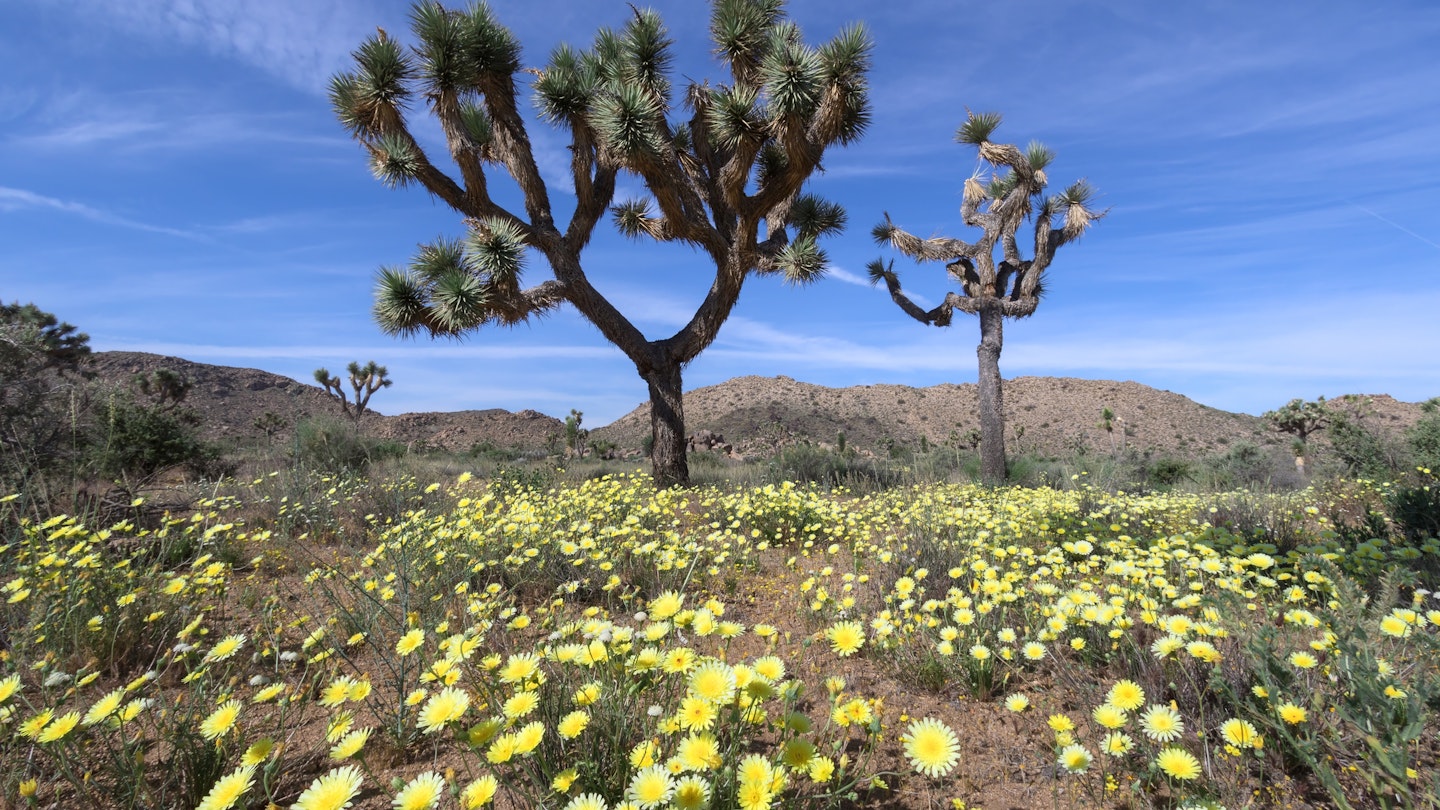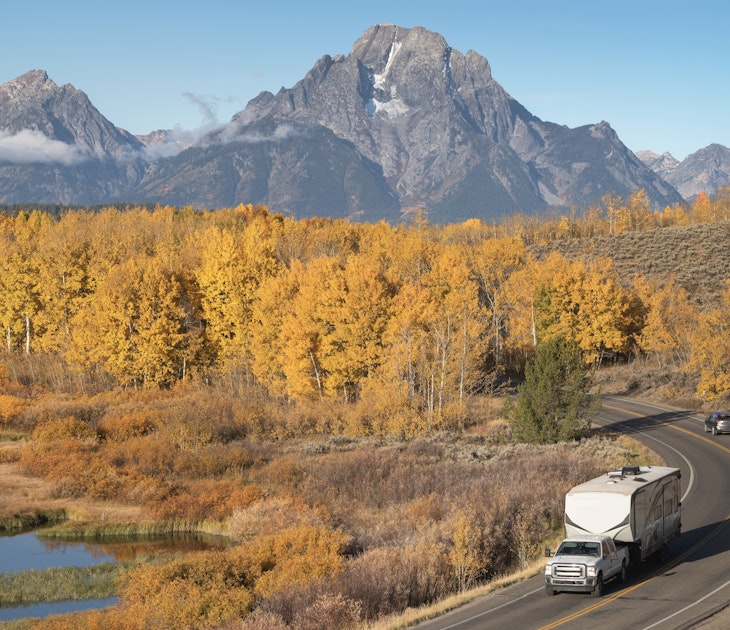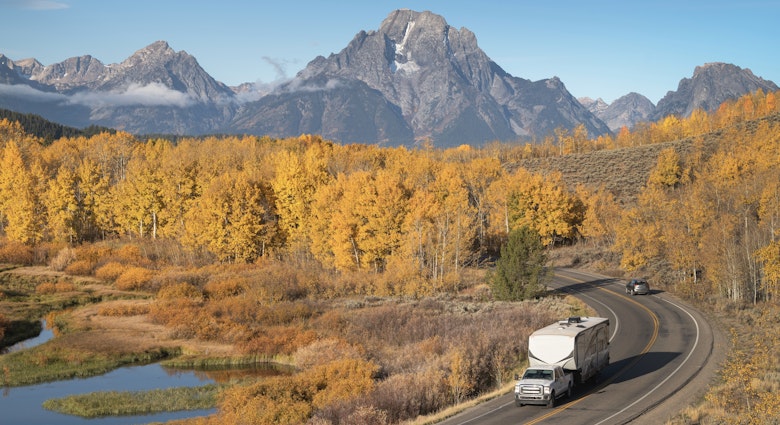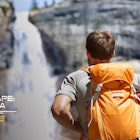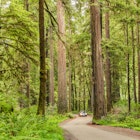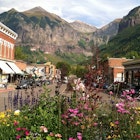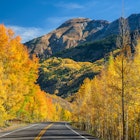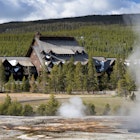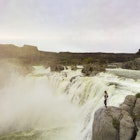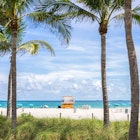Spring is a sensorial symphony in the US and national parks its front-row seats. Here's where to see the most spectacular shows.
As winter loosens its icy grip on North America, an enchanting transformation unfolds: flowers bloom, waterfalls rage and animals start their seasonal migrations.
Spring in the US is a sensorial symphony, and national parks provide front-row seats to the most spectacular shows – as long as you know where to go. Mud and lingering snow can create unpleasant hiking conditions, and some parks aren't fully operational until summer.
But choose your park wisely and you can spot prehistoric mating rituals, catch a rare superbloom, or leap in a desert creek that only appears in spring. Head to one of these national parks from March through mid-June, when landscapes burst to life with seasonal celebrations.
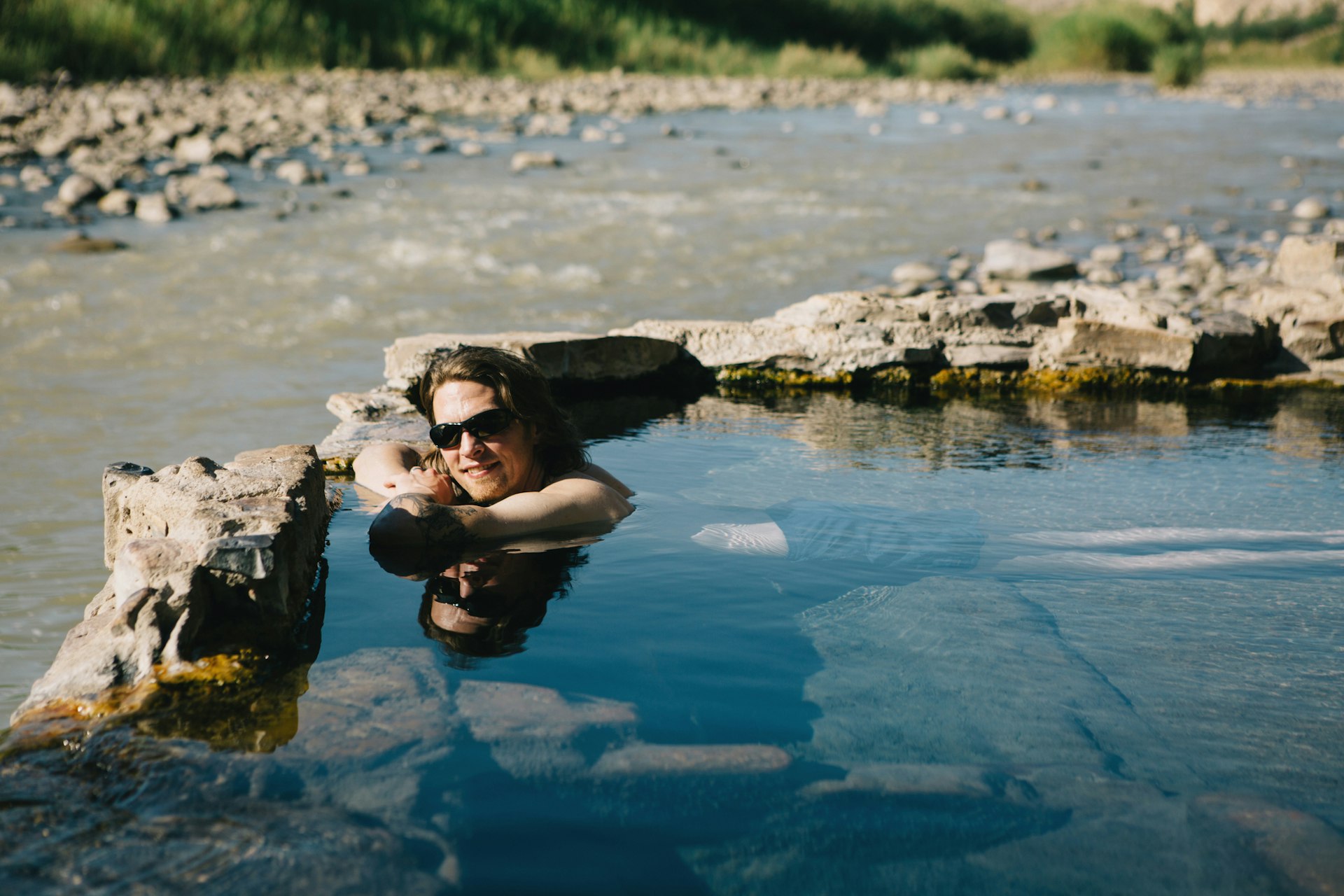
1. Big Bend National Park, Texas
Best for birding, hiking and hopping in hot springs
Get out your binoculars, birders: springtime in West Texas is an avian odyssey. From late February to early May, migrating birds nest among pine and oak trees carpeting the Chisos Mountains and along the Rio Grande. Ornithologically inclined visitors have identified over 400 species of feathered friends throughout the park – including colorful catches like yellow-breasted chats, painted buntings and hepatic tanagers. Twitchers searching for the rare Colima warbler should lace up their shoes for the strenuous hike along Boot Canyon. This ground-nesting songbird, rarely seen outside Big Bend, arrives in late April and leaves by August.
Flying choirs aren't the park's only springtime attraction. Big Bend's eponymous bluebonnet (or the Lupinus havardii, for botany nerds) blankets roadsides from late January through March; in superbloom years, they paint the mountains indigo. Spend your days floating with turtles down the Rio Grande, soaking in the park's geothermal hot springs, or driving to artsy Marfa (90 minutes northwest) to inspect the fashionably minimalist town. At night, trade your bird binoculars for a telescope: Big Bend is an International Dark Sky Reserve known for spectacular stargazing.
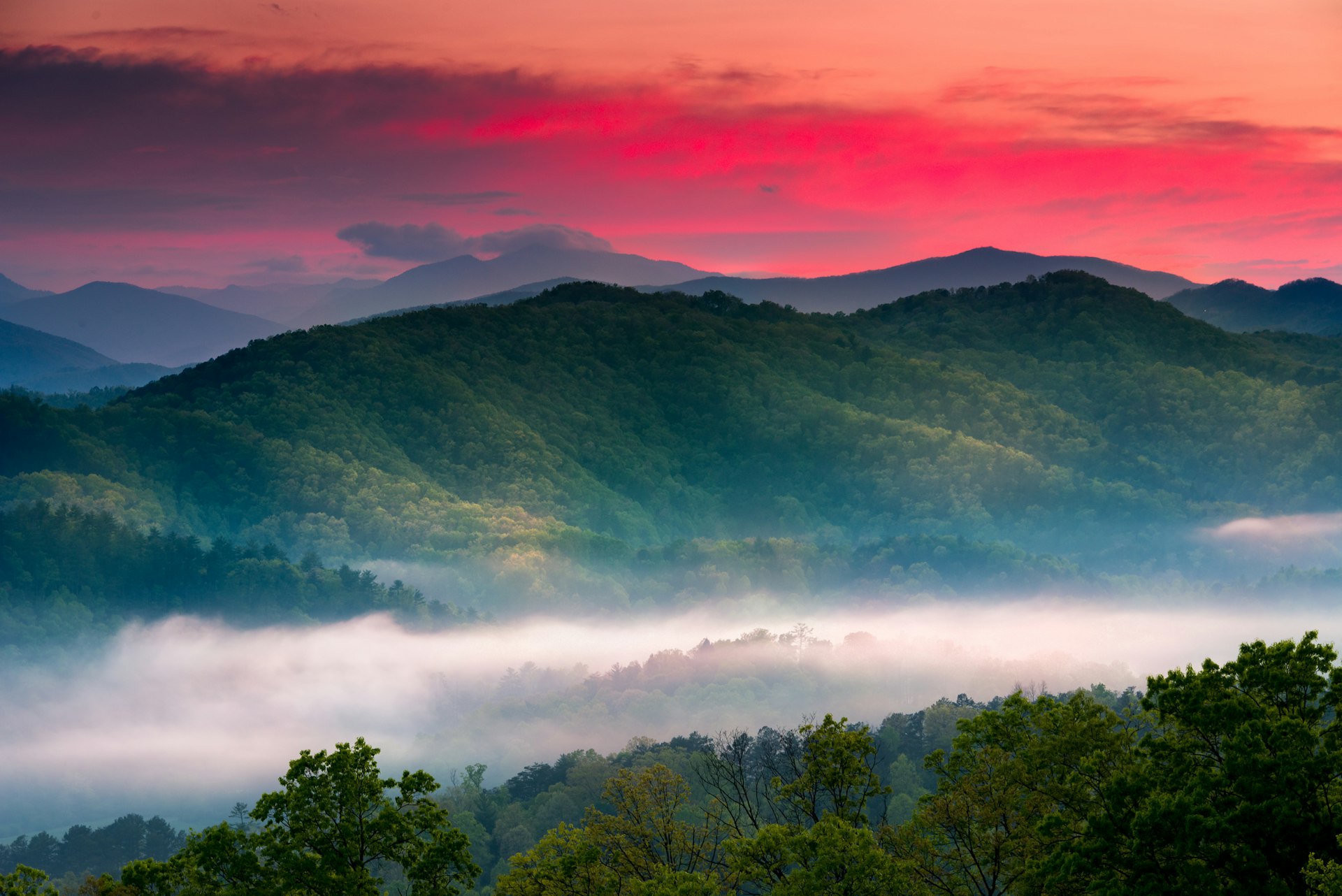
2. Great Smoky Mountains National Park, North Carolina and Tennessee
Best for blooms and mountain trails
It's lovingly dubbed “Wildflower National Park” for good reason. More than 1500 flowering plants decorate this subrange of the Appalachian Mountains year-round, with the most magnificent displays blooming between February and April. Before deciduous trees blossom, spring ephemerals turn the landscape into a petal-palooza packed with violets, trillium, lady slipper orchids and more.
Around 800 miles of trails snake through the park, but if you're on the flower hunt, stick to the Schoolhouse Gap Trail – a 2.2-mile climb from Laurel Creek near Townsend, Tennessee – known as the peaceful side of the Smokies. The Oconaluftee River Trail, a 3-mile path, is another floral stunner near Cherokee, North Carolina – home to the Museum of the Cherokee People, which celebrates local indigenous heritage.
If you can't tell a bleeding heart from a fire pink, fear not. Visit during the park's annual, week-long Spring Wildflower Pilgrimage when guides lead hikes to appreciate local flora.
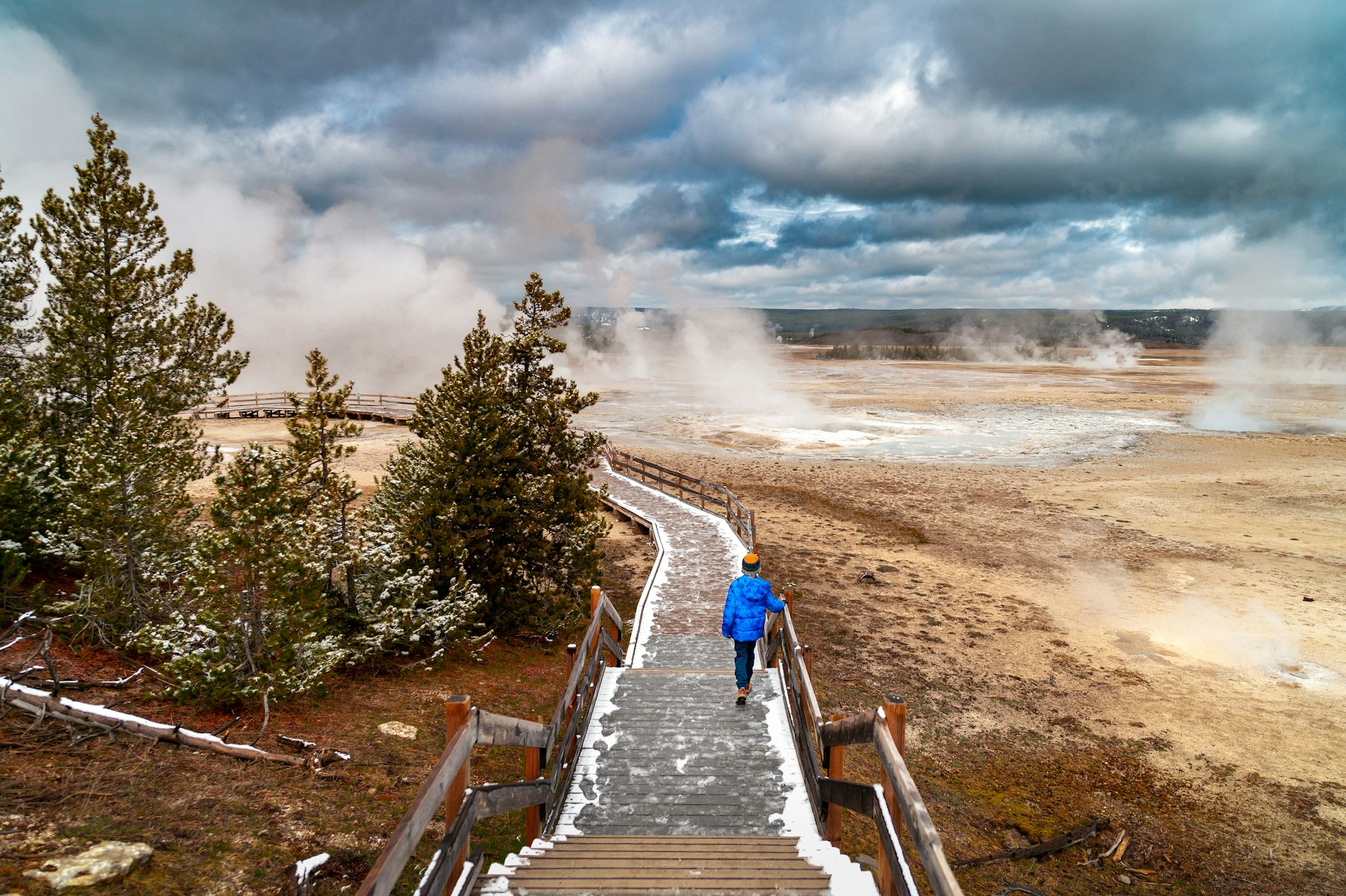
3. Yellowstone National Park, Wyoming and Montana
Best for wildlife watching and waterfalls
America's first national park simmers with superlatives. Bubbling hot pots, explosive geysers and roaring rivers delight year-round, but if you visit in late April, there's even more reason to ooh and aah: babies. Yellowstone contains the most impressive collection of megafauna in the contiguous United States. As snow plows clear the park's main roads, visitors can cruise around in search of Yellowstone's youngsters.
Bring binoculars to eye bear cubs emerging from their dens, wolf pups playing with their pack and bison calves clinging to their mothers. Lucky wildlife watchers might also see baby eagles, elk, bighorn sheep, river otters and moose.
As newborns appear, snow melts away – and while the extra water isn't ideal for hiking (most trails are muddy this time of year), it makes for wondrous waterfalls. Throughout spring, roughly 63,500 gallons of water plunge over Yellowstone River's thundering Lower Falls every second. Luckily, there's no need to worry about selfie snappers blocking the view – crowds are thin this time of year, and summer's sluggish traffic is a distant dream.
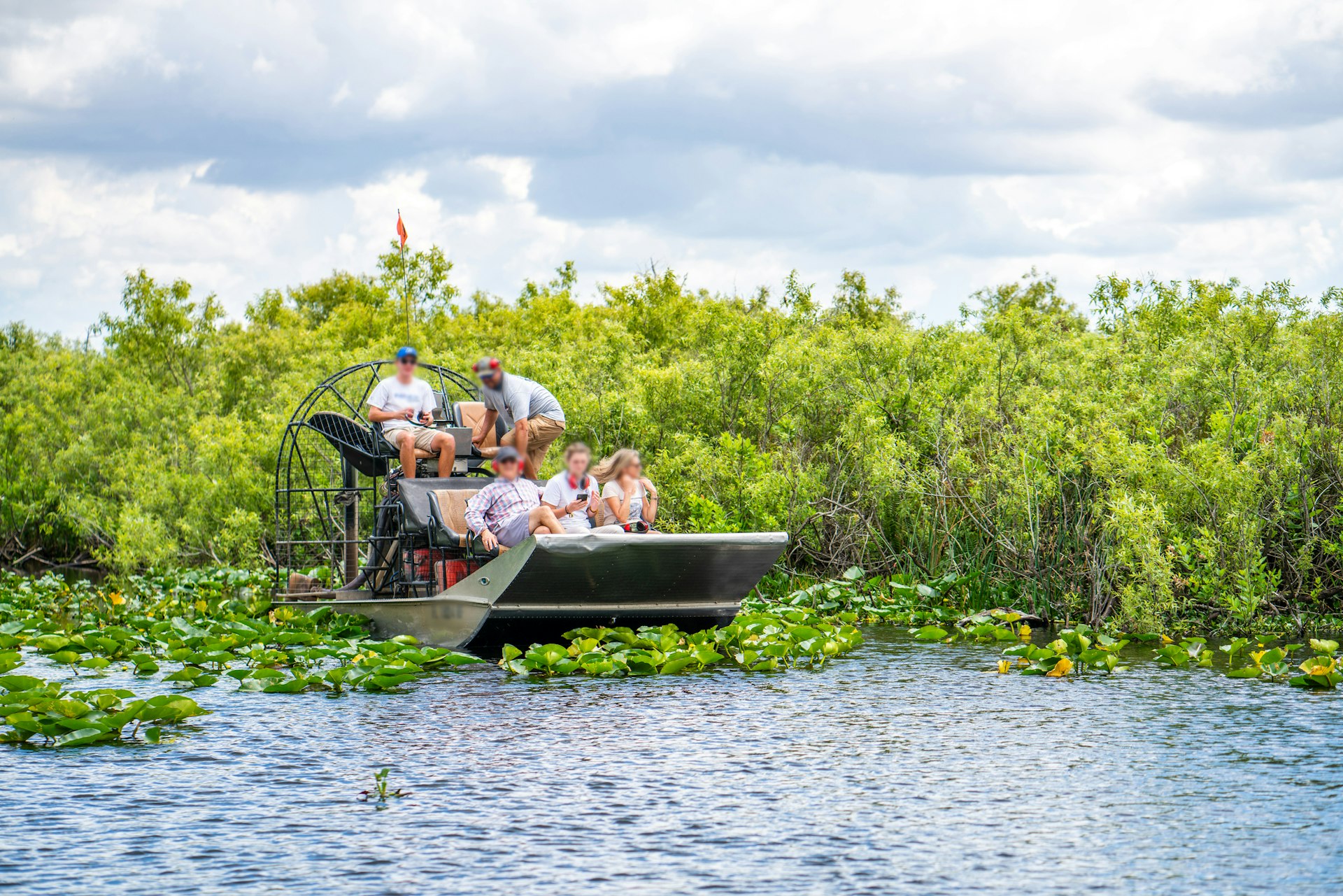
4. Everglades National Park, Florida
Best for exotic mating rituals and kayaking
Forget the drunken courting rituals of nearby Miami's spring breakers. If you're curious about passion, head to the Everglades, where cold-blooded alligators heat up the wetlands. From mid-April to mid-May, adult males peacock by slapping the water with their jaws, lifting their tails and growling – an elaborate display for female attention. Catch the lusty crocodilians around Shark Valley, found on the south side of the park's 1.5 million subtropical acres. Visitors can bike and hike at their leisure, or take a guided tram tour along a 15-mile loop.
April also marks the end of Florida's dry season, when humidity is low and temperatures are mild (expect highs around 80°F). Enjoy pleasant weather by air-boating across lily-packed water or paddling through mangrove tunnels – Everglades Adventures leads two- to three-hour kayak tours.
If you want the opposite of Miami's party scene, grab a wilderness permit and consider camping on a Chickee. These wooden camping platforms, raised above the water, are only accessible by boat, ensuring your noisiest neighbors will be aquatic birds and grass-munching manatees.
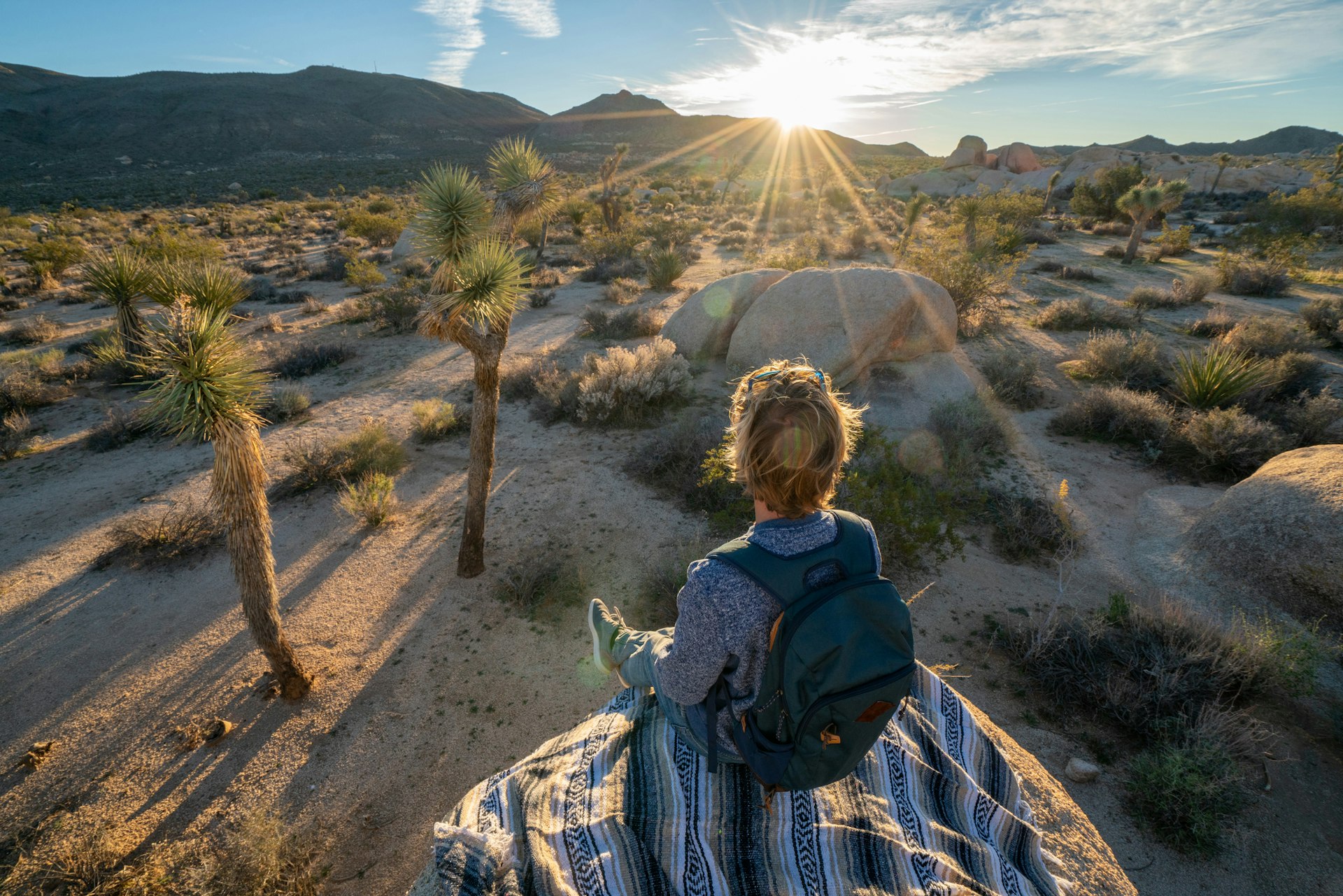
5. Joshua Tree National Park, California
Best for desert flora and rocky scrambles
Joshua Tree's namesake plant – a giant succulent with gnarly branches and spiky green leaves – is usually the star of this park, 150 miles east of Los Angeles. But when springtime blossoms, wildflowers take their turn as the showstoppers. Winter showers coax these flowers to burst across the landscape, and every five to 10 years, perfect conditions lead to a superbloom that turns the desert kaleidoscopic.
While it's nearly impossible to predict a superbloom, it's still worth viewing whatever pops up – like poppies, pincushions, Indian paintbrushes and other whimsically-named beauties. Peak petal times vary based on elevation, temperature and winter precipitation but usually hit their apex around March and April. For up-to-date recorded wildflower information, visit the park’s website.
Even without a floral explosion, spring is splendid in Joshua Tree. Mild temperatures throughout March and April are ideal for outdoor adventures (expect highs around 70–80°F). Wander around the Wonderland of Rocks stone labyrinth, climb the monzogranite with Mojave Guides, or trot on horseback at the Cascade Trails Mustang Sanctuary. For a complete immersion in the desert dreamscape, book an Autocamp airstream and sleep among the scenery.
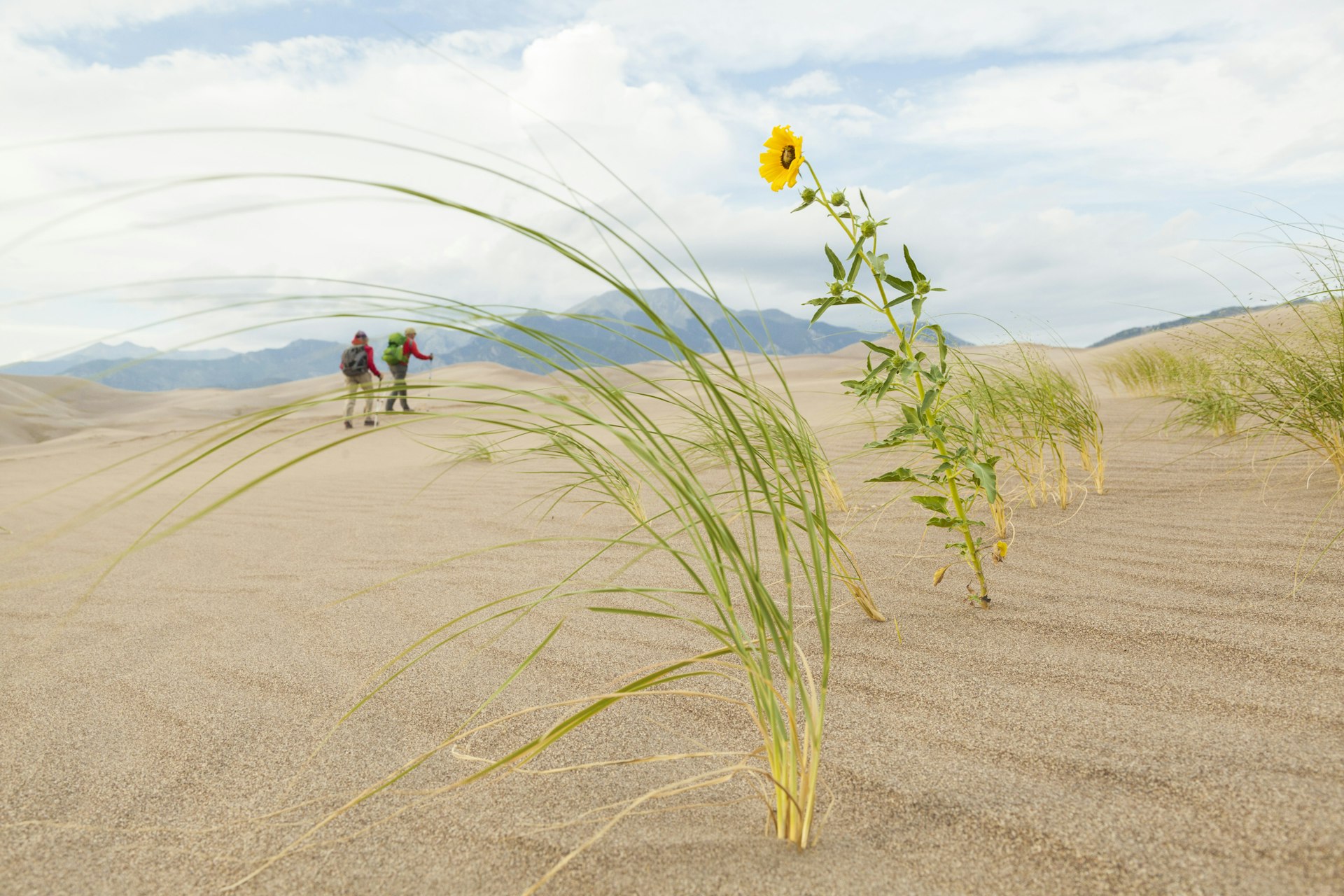
6. Great Sand Dunes National Park, Colorado
Best for sand sledding and skimboarding
Snow bunnies who love shredding slopes are in luck – ski season might be waning in Colorado's Rocky Mountains, but drive 200 miles south of Denver and the boarding action is just getting started. Moderate temperatures (highs around 50–70°F) make late April through May prime for sandboarding or sledding down North America's tallest dunes, which reach roughly 750ft above the San Luis Valley.
Daredevil dune riders should rent proper gear before entering the park from outfitters like Oasis (4 miles from the Great Sand Dunes Visitor Center), which is stocked with gear specifically for sand riding.
If you don't care for slopes, try surfing instead. By late May, snowmelt from jagged peaks of the Sangre de Cristo Mountains creates Medano Creek – a seasonal river where visitors tube, skimboard and construct sand castles. Dream big – with the park's 5 billion cubic meters of sand, you can build an entire kingdom.
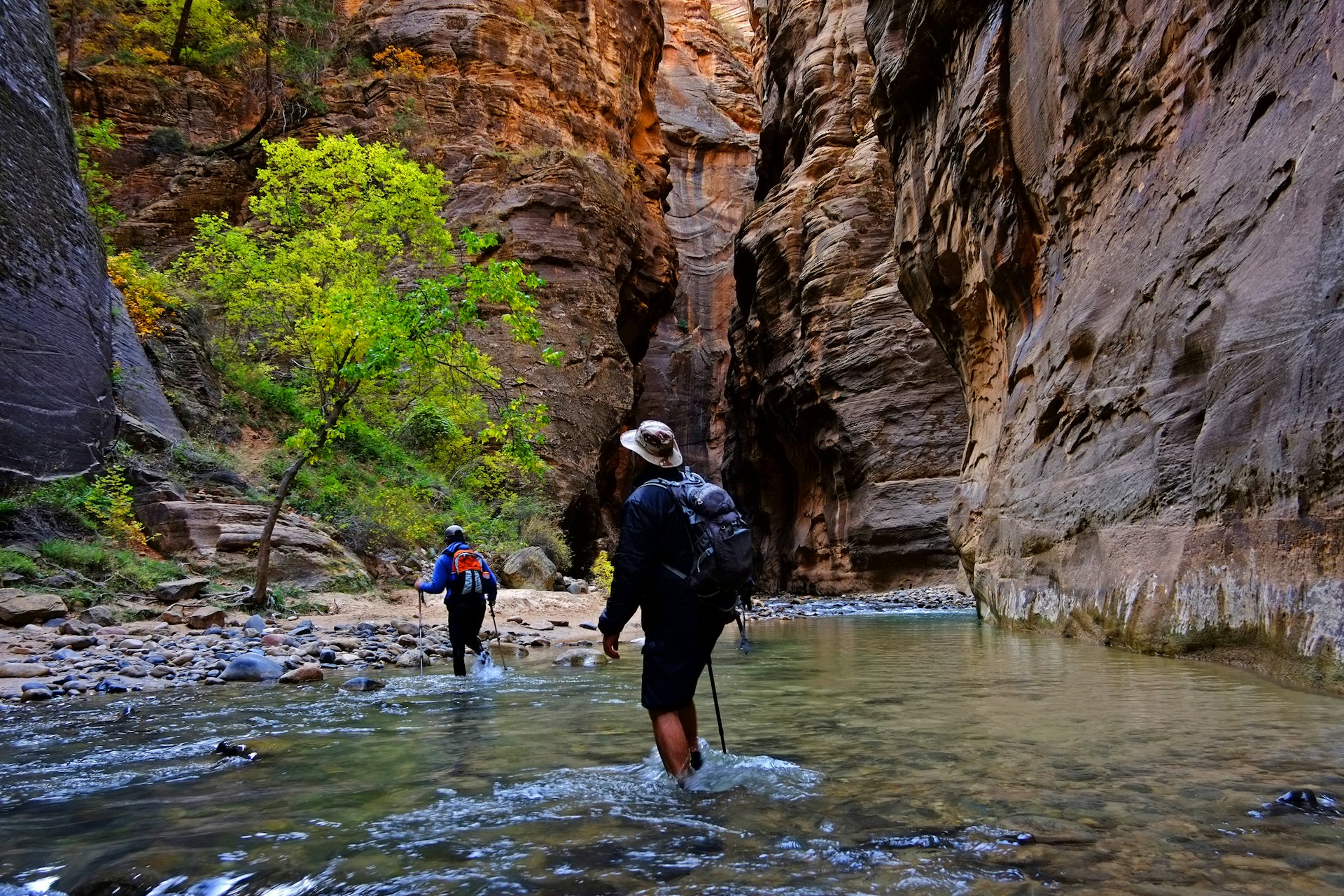
7. New River Gorge National Park and Preserve, West Virginia
Best for white-water rafting and rock climbing
April in West Virginia is for adrenaline junkies. As the New River drops 750ft over 50 miles through this national park, it creates a series of rapids that reach a class five level – the most challenging for white-water rafters to navigate. To brave the wildest routes, join a licensed outfitter like Adventures on the Gorge for safety instruction and proper equipment.
The park's rambling river has spent millions of years carving through sandstone, creating steep canyon walls beloved by East Coast rock climbers. Mountaineers can try their hand at over 1400 named climbs, best attempted in April and May, when temperatures reach 65–75°F.
After a full day of heart-pumping adventure, kick back in neighboring Fayetteville to eat and imbibe. At Arrowhead Bike Farm, you can do a bit of everything: taste local brews, gobble West Virginia bratwurst, rent some wheels to explore nearby trails, or pitch a tent for an on-site stay.

